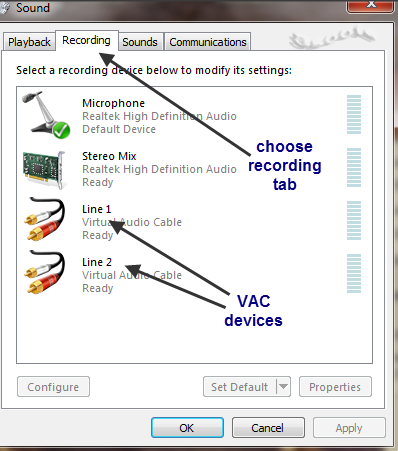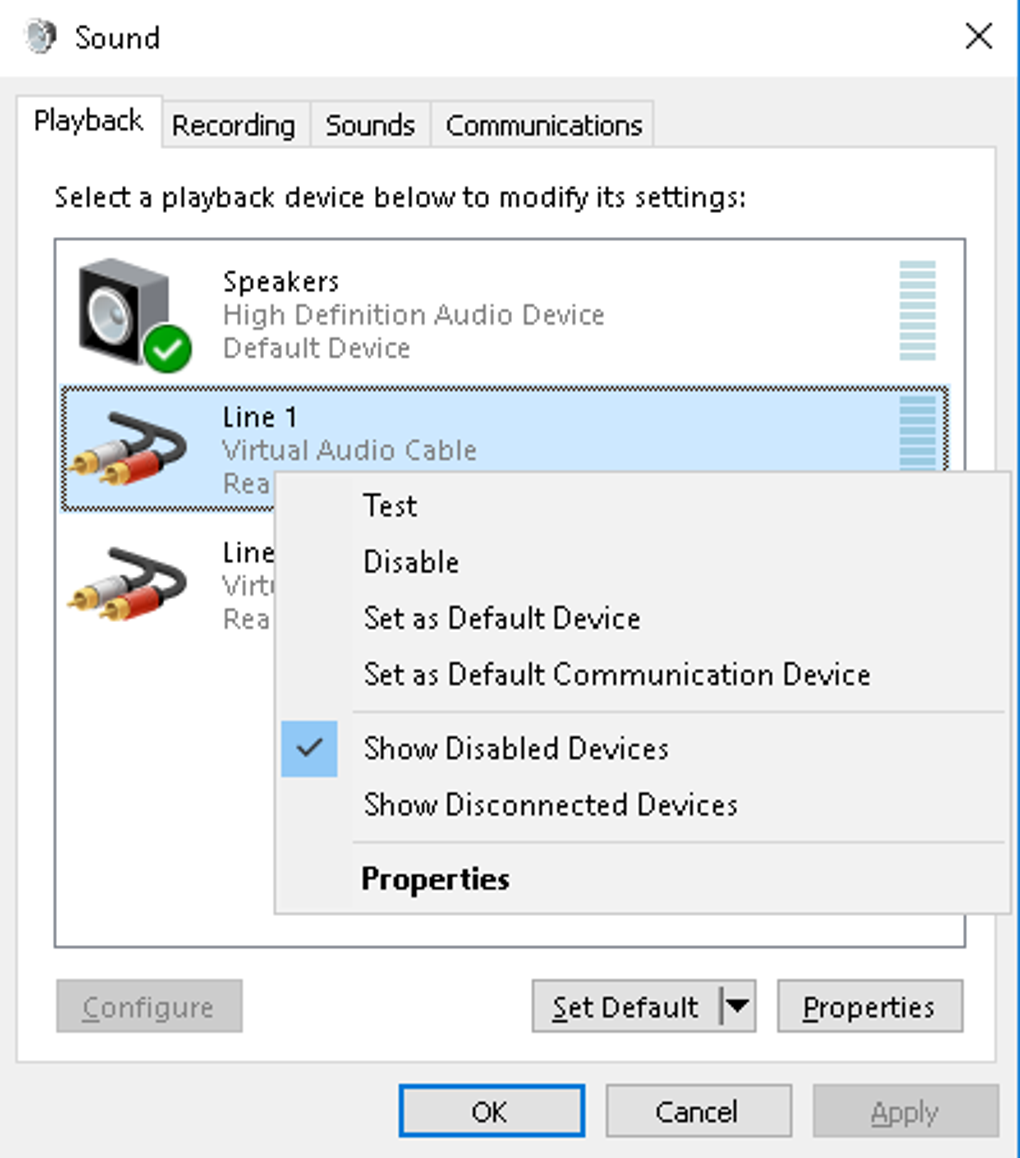
Switch 'Audio Monitoring' to 'Monitor Only' for all the audio sources you want to hear on stream. Step 13: Switch "Audio Monitoring" to "Monitor Only (mute output)" Step 12: Under 'Desktop Audio' select the Cogwheel then click 'Advanced Audio Properties'

If you only have 1 monitor you can just click "OK", if you have multiple monitors select which one to capture in "Display" then click "OK". Step 11: Enter properties for the Screenshare and click 'OK' Step 10: Under 'Create new' enter a name for your source and click 'OK' Step 7: Open up the OBS Studios and create a new Scene Then open the OBS Installer you downloaded and click through the installation menu Go to OBS and click the operating system your using to download. Step 6: Download and install OBS (if you don't already have it) You should see a window pop up that says 'Installation Complete and Successful' Step 3: Right click on 'VBCABLE_Setup_圆4' and click 'Run as administrator'

We recommend saving the virtual cables files in your Program Files on your PC or Mac. Step 2: Select where to save the VB-CABLE Virtual Audio Device If you want to record additional sounds, make sure it’s playing through the Line 1 playback device as well.Screen sharing with sound (VB audio cables) To screenshare to Stage TEN with audio you will need to set up a virtual audio device first Step 1: Go to VB-Cable Virtual Audio Device and download the software Note that we didn’t set the Line 1 playback device as default, so anything else you play will still go through your main audio device and won’t be recorded. Now you can use your sound fully while using ASIO4ALL on Windows 7/Vista, and if you want to record the output of ASIO4ALL, you can do so using the Line 1 recording device. Now configure ASIO4ALL: enable the output for “Virtual Audio Cable” only and check “Force WDM Driver To 16 Bit” (I find that not doing this introduces extra latency), and disable the output for your main audio device Click on the Listen tab, check “Listen to this device”, select your main audio device under “Playback through this device:” and click OK for both screens. Go to Control Panel -> Sounds, click on the Recording tab, right click Line 1 and go to Properties.


Here is how to do it:īuy Virtual Audio Cables (or you can find it on the internet somewhere if you search, although I don’t condone piracy) I’ve solved this issue for those who want to use ASIO4ALL on Windows 7/Vista.Ī program called Virtual Audio Cables (> ) enables you to route audio to your main sound device, and since it uses a virtual WDM driver, it doesn’t cause the same problem. Ok I got it working, I totally ditched the ASIO multi server and followed this explaination that I found on another forum:


 0 kommentar(er)
0 kommentar(er)
